Fittingly nicknamed ‘The Hatters’ for their historical connection with the hat-making trade, you have to take your hat off to Luton Town for the remarkable season they are having.
Despite having the second-lowest average attendance in England’s second-tier, Kenilworth Road has been rocking in the 2021/22 campaign. Sitting in the final playoff spot with just less than a quarter of the season still to go, Nathan Jones’ side are certainly punching above their weight.
Already merely five points off last season’s tally of 62, Luton could make an outstanding, yet surprising push to reach the promised land of the Premier League for the first time in history, a feat thought unimaginable when the team were battling it out in the National League less than a decade ago.
The football played by Jones’ men isn’t extravagant by any stretch of the imagination but its effectiveness has reigned supreme in what has been an extremely competitive Championship season.
The world got a glimpse of Luton’s dogged determination and tremendous tenacity in their recent FA Cup bout against the European champions Chelsea. Despite falling to a late Romelu Lukaku strike, the Hatters fought tooth and nail for every ball, going toe-to-toe with the English giants and showing their quality as well as their tactical discipline.
This article will be a tactical analysis of Luton Town in this campaign in the form of a team scout report. It will be an analysis of the key tactics behind the side’s inspiring success this season.
Formation and style
As part of a common tactical trend this season in the Football League, Luton Town have predominantly used a back three formation in all competitions. The Hatters have used a back three system in exactly 63 percent of their matches this season. The 3-5-2/5-3-2, in particular, has been Luton’s most utilised formation and has been deployed in 38 percent of their games.
Jones has a preference for this structure due to its excellent defensive solidity but has also been no stranger to switching things up and setting the side up in more of a 4-2-3-1 or 4-3-3/4-1-4-1.
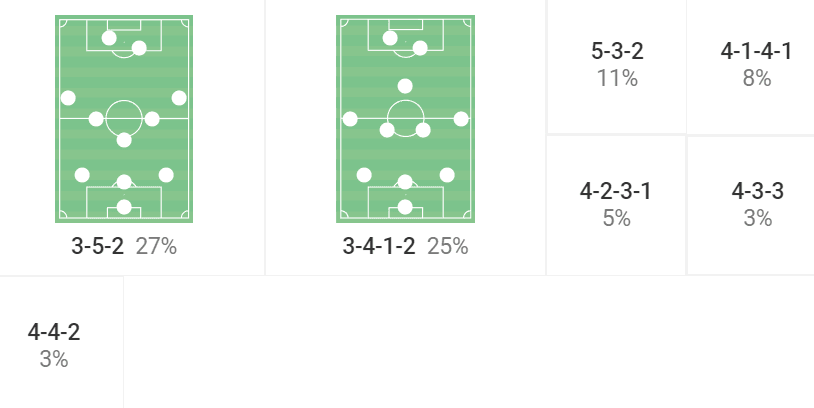
Luton are stacked with quality in the defensive department including former West Ham United academy player Reece Burke, ex-Aston Villa defender James Bree as well as Welsh international Tom Lockyer and so using a back three with wingbacks makes quite a lot of sense due to the personnel available to Jones.
But how exactly do Luton Town like to play? The Hatters are happy to cede possession to their opponents and have averaged just 44.5 percent ball possession in their games this season, the third-lowest in the division.
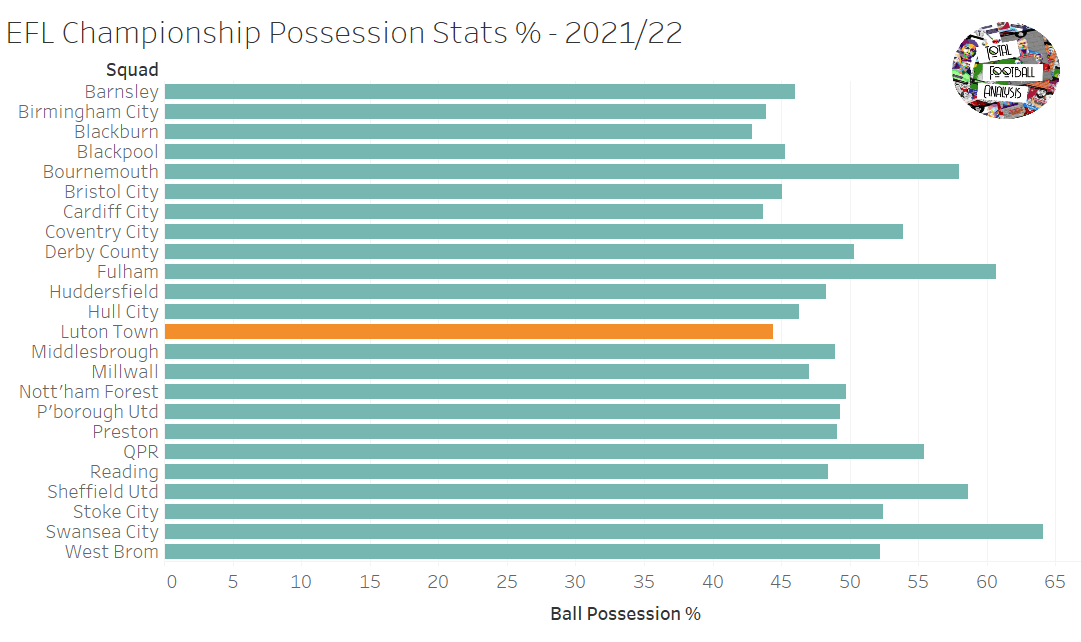
Defensive security is a major component of Jones’ philosophy at Kenilworth Road, but this doesn’t imply that Luton simply sit deep and counterattack. They are one of the highest pressing sides in the Championship right now, boasting a Passes allowed Per Defensive Action rate of 8.81, meaning that the Hatters are only allowing the opposition to play about 9 passes before making a defensive action. But more on this later.
In possession, the objective is to get the ball forward as quickly as possible. Luton are averaging just 2.17 passes per sequence this season, the second-lowest in the Championship.
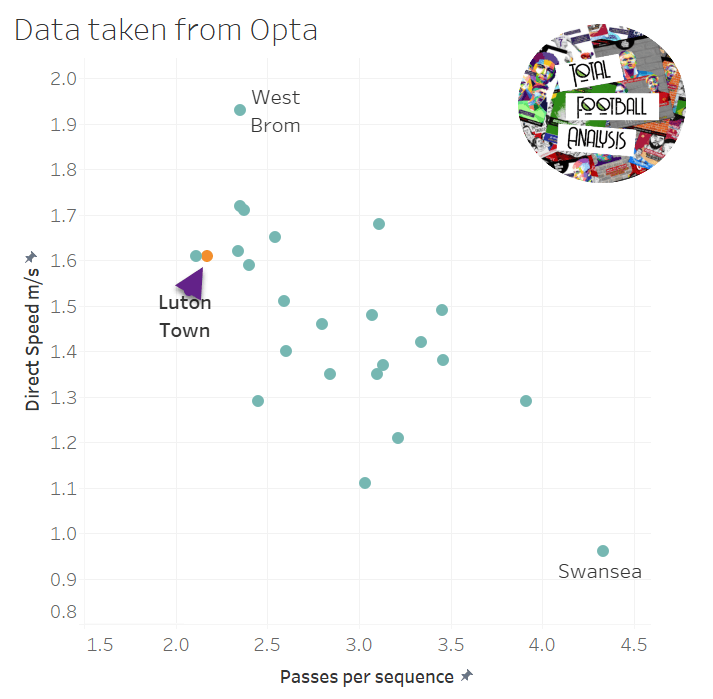
Contrasting their passes per sequence and direct speed of their attacks, Luton come out on top as one of the most direct sides in England’s second-tier.
High pressing, dogmatic defending, and direct football are the principles of Nathan Jones’ Luton side on paper, but let’s take a deeper look at exactly how the Hatters look in different phases of the game.
Man-to-man/zonal pressing
As already hinted at in the previous section, Luton are a high-pressing, high-octane side who put pressure on their opponents to win the ball as far up the pitch as possible.
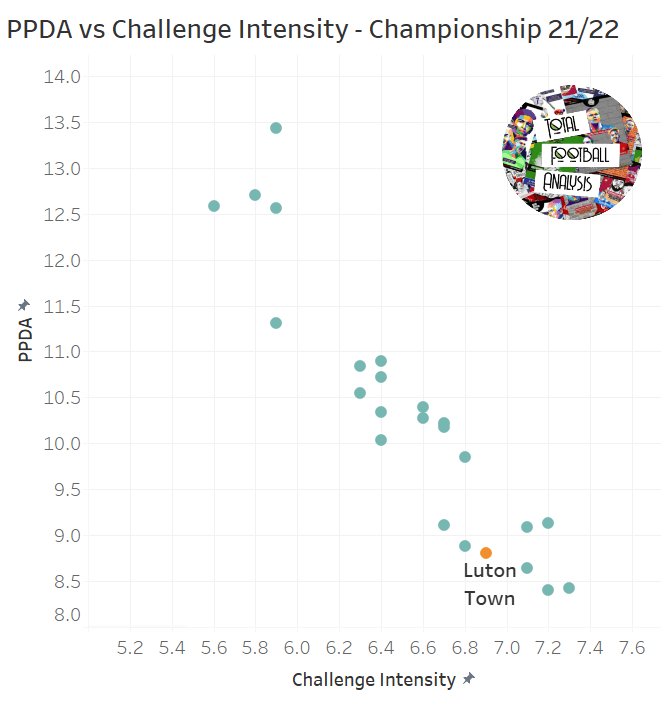
Using PPDA and challenge intensity is a good way to observe how actively a team is looking to recover the ball when it’s in the hands of the opposition. The lower the PPDA, the less a defensive team allows the attacking side to have possession whilst challenge intensity quantifies “how many defensive actions (defensive duels, loose ball duels, interceptions, tackles) a team is doing per minute of opponent ball possession”, according to Wyscout.
Luton have the fourth-lowest PPDA in the Championship this season so far as well as the fourth-highest challenge intensity meaning they are very intense off the ball, seeking to win it back as soon as they’ve lost it.
But what tactics does Jones deploy in the high-pressing phase to optimise Luton’s ability to do so? The answer is a mix of a man-to-man and zonal pressing system. Luton’s 3-5-2 turns into a 3-2-1-4 during this phase as the wingbacks push up to mark their opposite numbers and one of the central midfielders move higher to sit on the opponent’s deepest pivot.
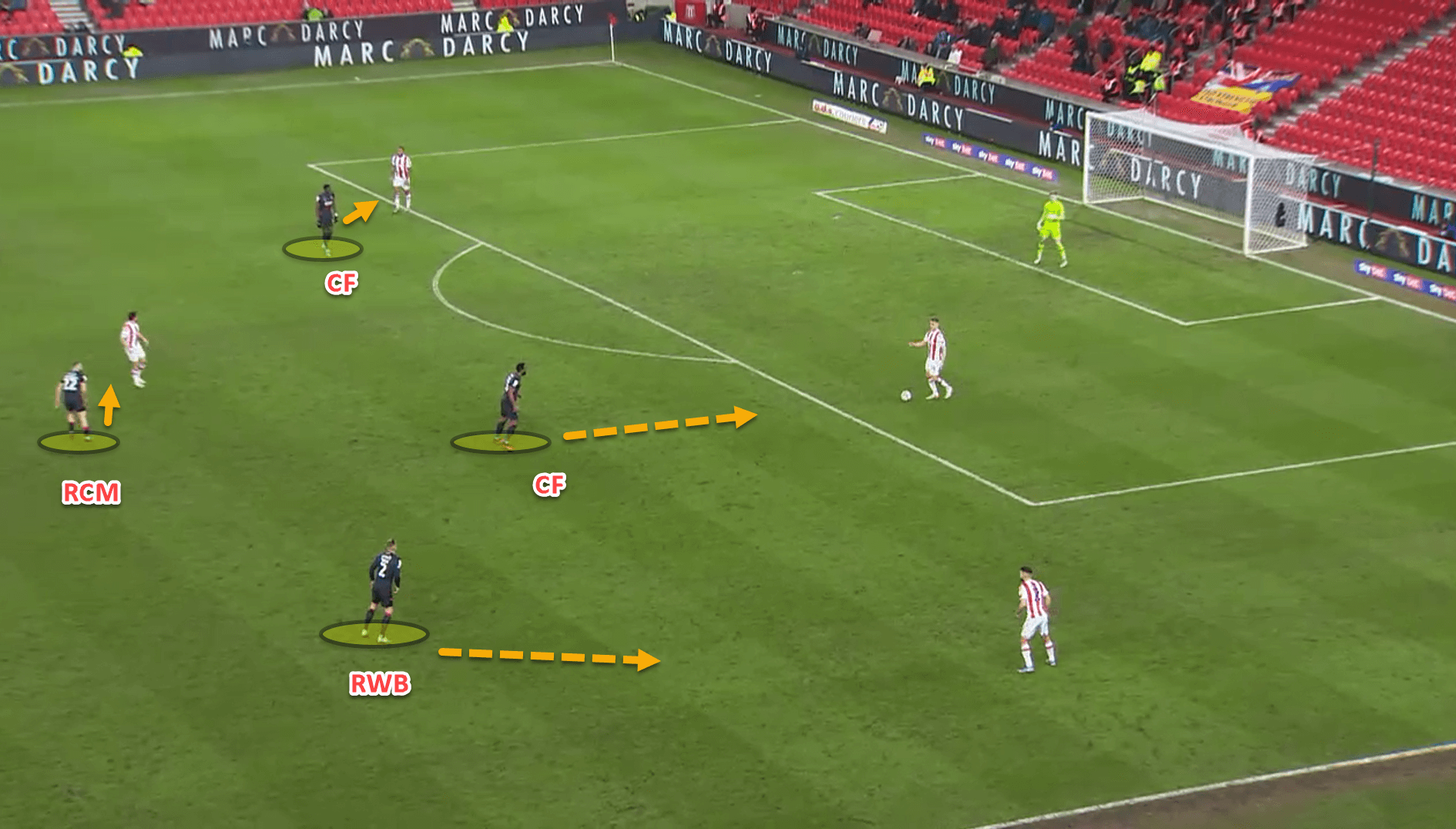
Luton’s number ‘6’, or single pivot, remains deeper than his supporting midfielders and plays zonally. Essentially, in the high-press, the Hatters have two midfielders going man-to-man and one sitting back, protecting the backline from aerial balls and marking any advanced players that drop into his zone.
Gabriel Osho has performed this role quite well for Jones this season and has been somewhat of a Swiss army knife for the manager, capable of playing in the backline as well as in midfield. Osho’s defensive awareness and physicality make him an excellent option to protect the area in front of the defence.
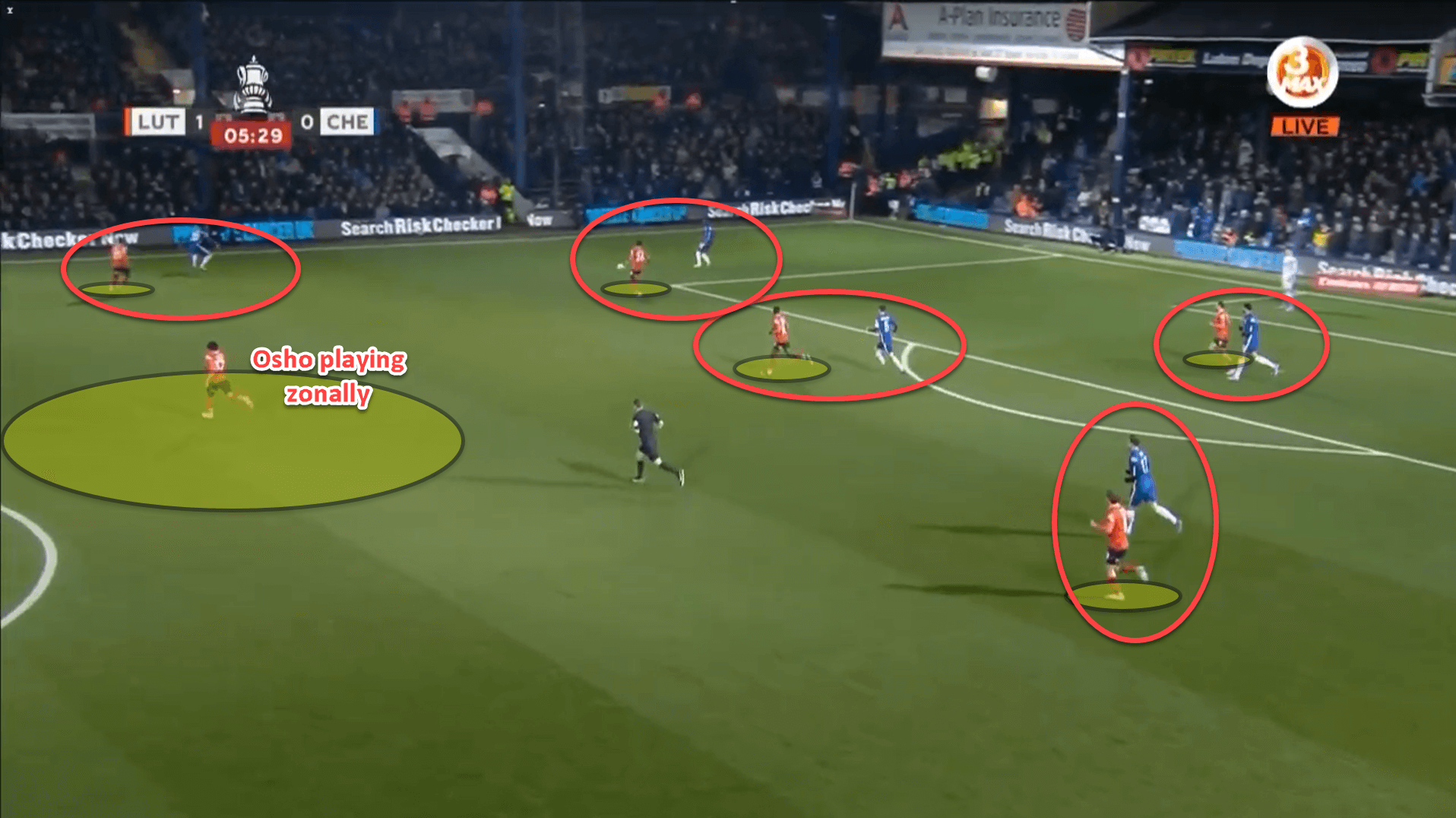
This man-oriented-zonal mix allows Luton to be very intense in their high pressure but also gives them security with Osho, or whoever plays there, sitting deeper to clean up any danger in case the press is broken.
Total Football Analysis published an article last week that highlighted Barcelona’s extreme man-to-man press under Xavi Hernandez. La Blaugrana even push their number ‘6’ high in this phase which can be extremely detrimental if the press is broken.
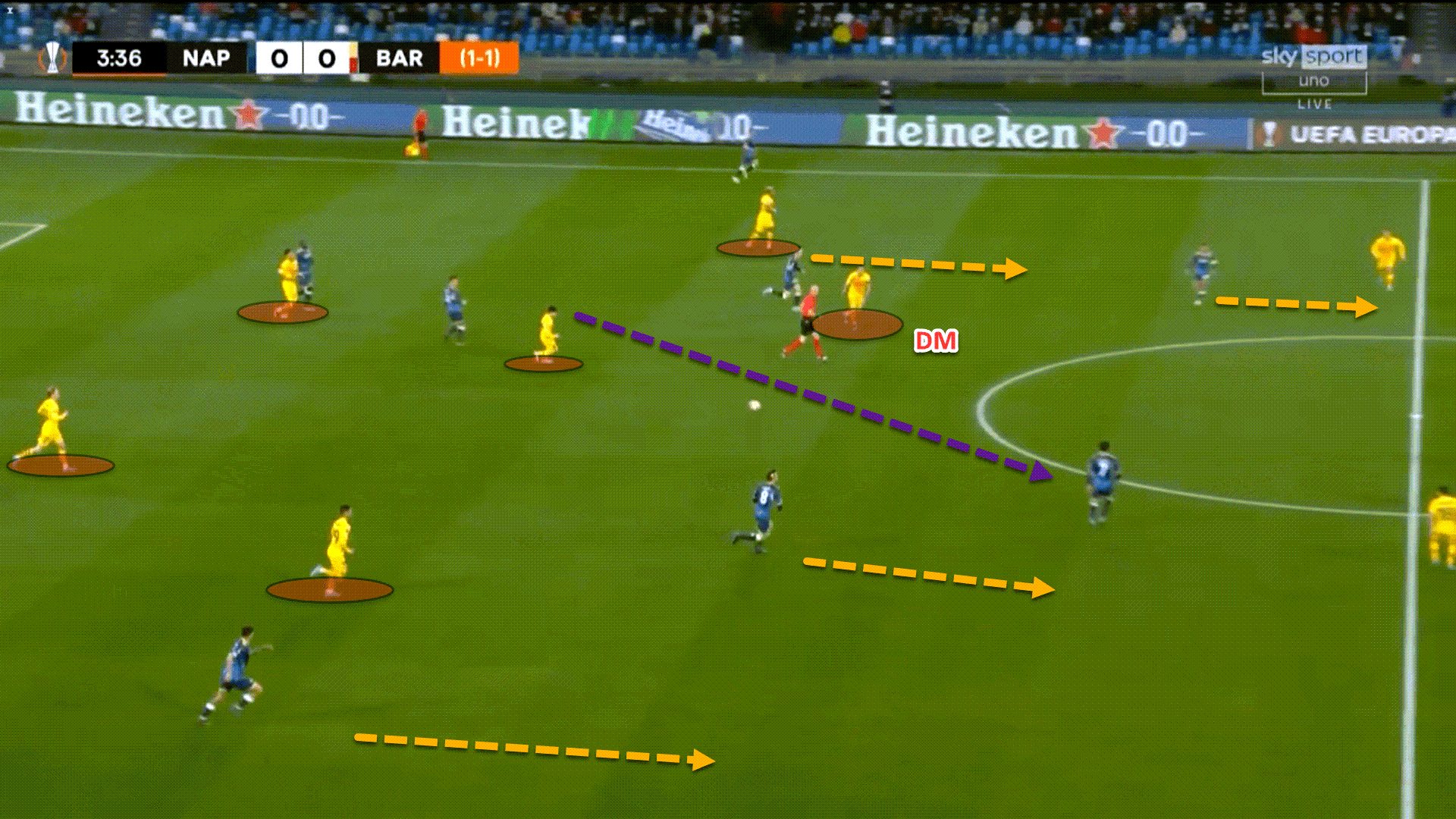
Keeping the ‘6’ back gives Jones’ side that little bit extra security in case the press is broken which is a key cog in their wheel for ensuring that their defensive system is actually efficient and tough to play through.
Ultimately, Luton are extremely well-drilled in their pressing and so massive credit must be given to the coaching staff as well as the players for putting the hard-work in. The numbers don’t lie either. The Hatters have scored 6 goals from turnovers high up the pitch. Only Fulham have scored more from these situations.
Central pressing traps
Another key component to Luton’s tactical system under Jones is luring the opposition into pressing traps in the central areas. These traps occur when the side are pressing high but also when sitting in a mid-block.
Many sides prefer to force the attacking team wide when defending by cutting off inside passing angles. Navigating the opponent wide allows the defensive unit to use the touchline as an extra man and limits the options that the player in possession has.
Luton don’t subscribe to this notion. Instead, they force their opponents inside and then look to pounce.
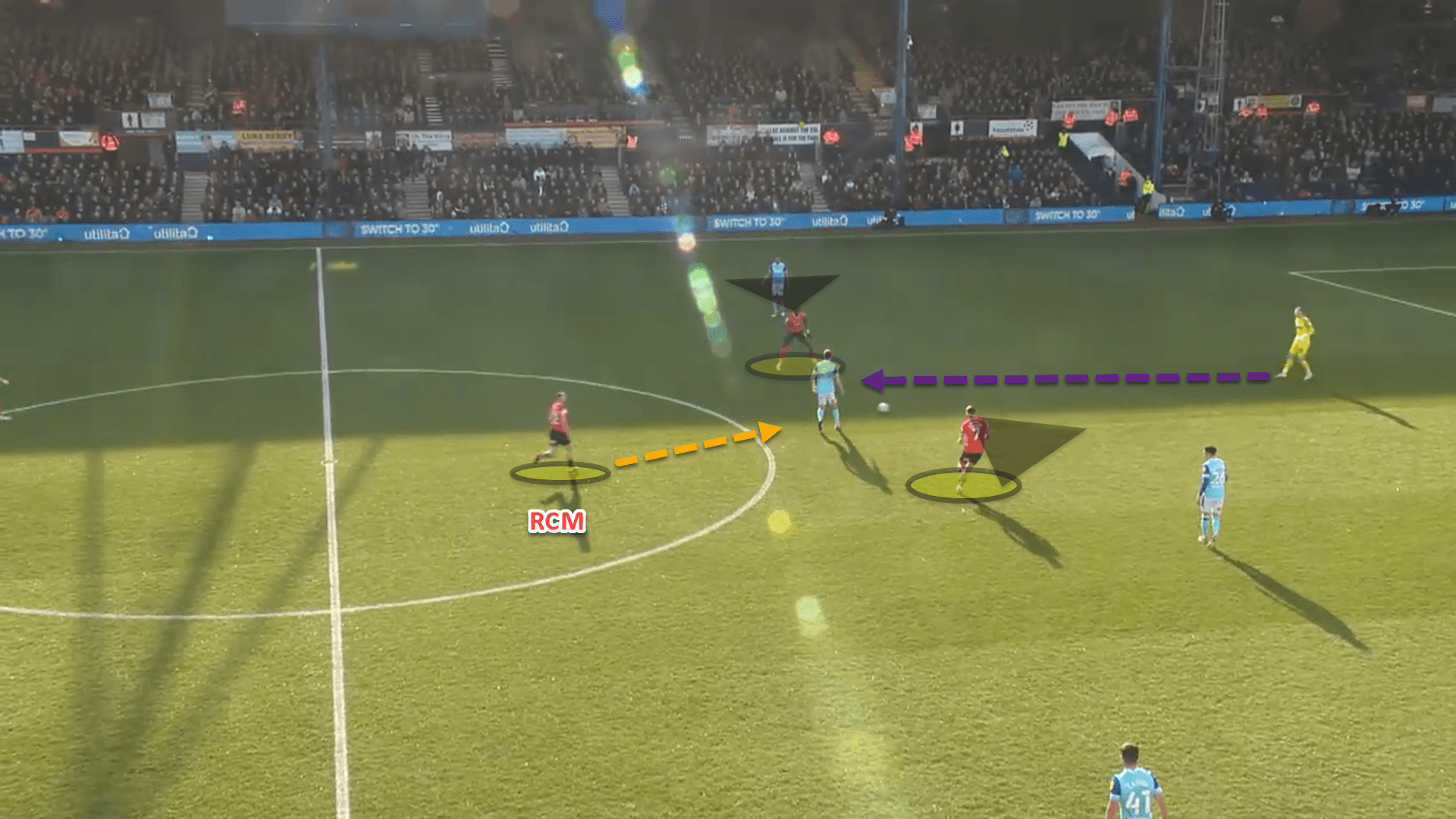
Here, Derby County were trying to play their way out from a deep area of the pitch. Luton’s centre-forwards blocked access off to the nearest central defenders, preventing the possibility that the ball-carrier can play out to the sides, whilst one of the central midfielders has pushed up to jump him from behind.
Derby’s pivot midfielder was forced to either play a negative pass back to the goalkeeper, allowing Luton to push their defensive block higher while chasing the pass, or else turn and try to play past the onrushing presser, risking losing possession in a dangerous area. The first option was taken.
The only issue with this type of pressing trap is that if the opponent escapes and manages to play it out wide, there can often be a lot of space for them to advance down the flanks.
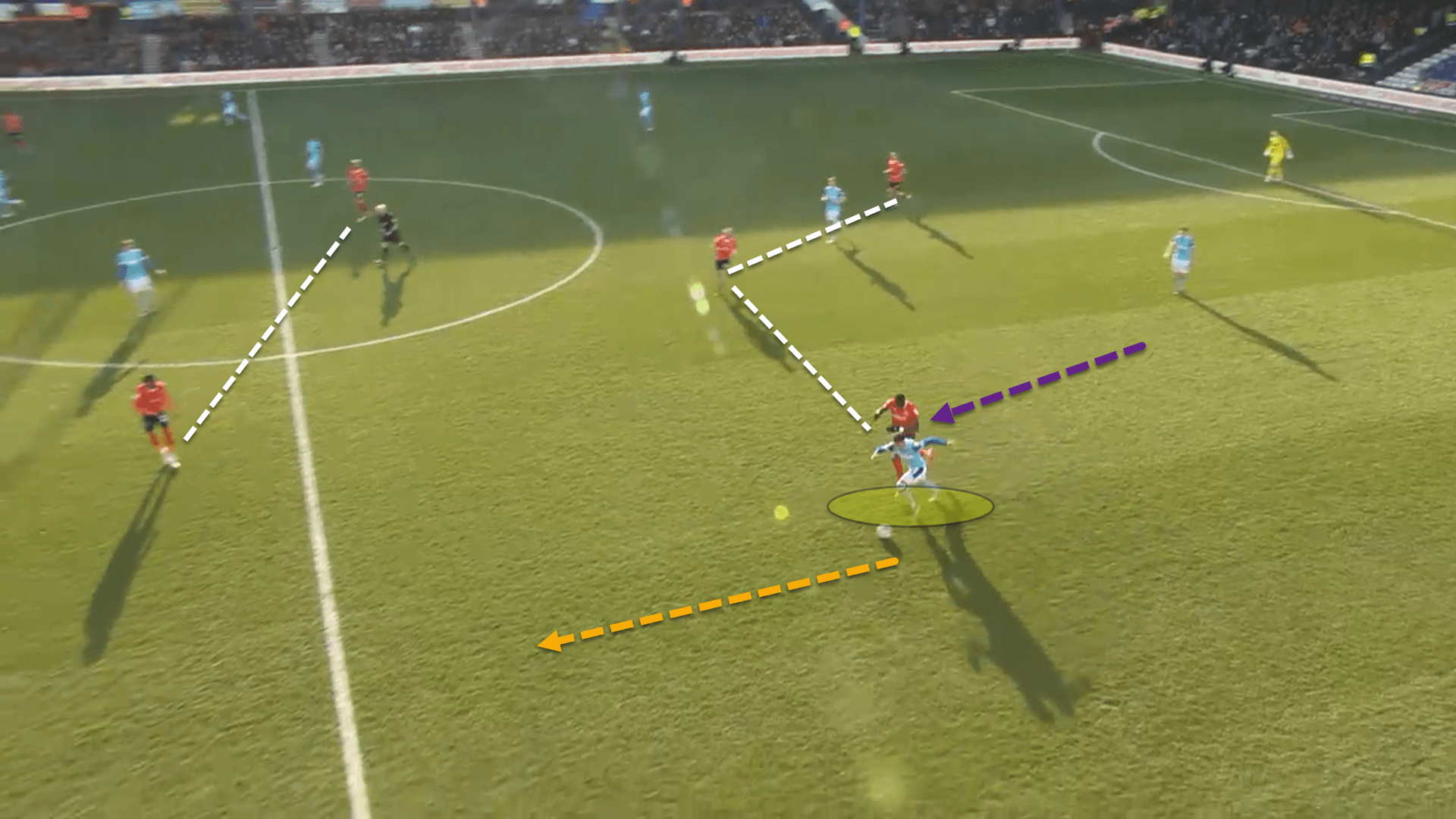
In this example, Derby managed to break Luton’s trap and drove down the left-wing. Elijah Adebayo was forced to track all the way back in order to avert the danger and prevent the Rams’ defender from carrying the ball any further up the pitch.
Generally, when the pressing trap is broken, Luton drop back into a low block to compact the space behind their backline. Given that their base formation is a 3-5-2, Luton’s wingbacks align with the centre-backs to create a 5-3-2 low block.
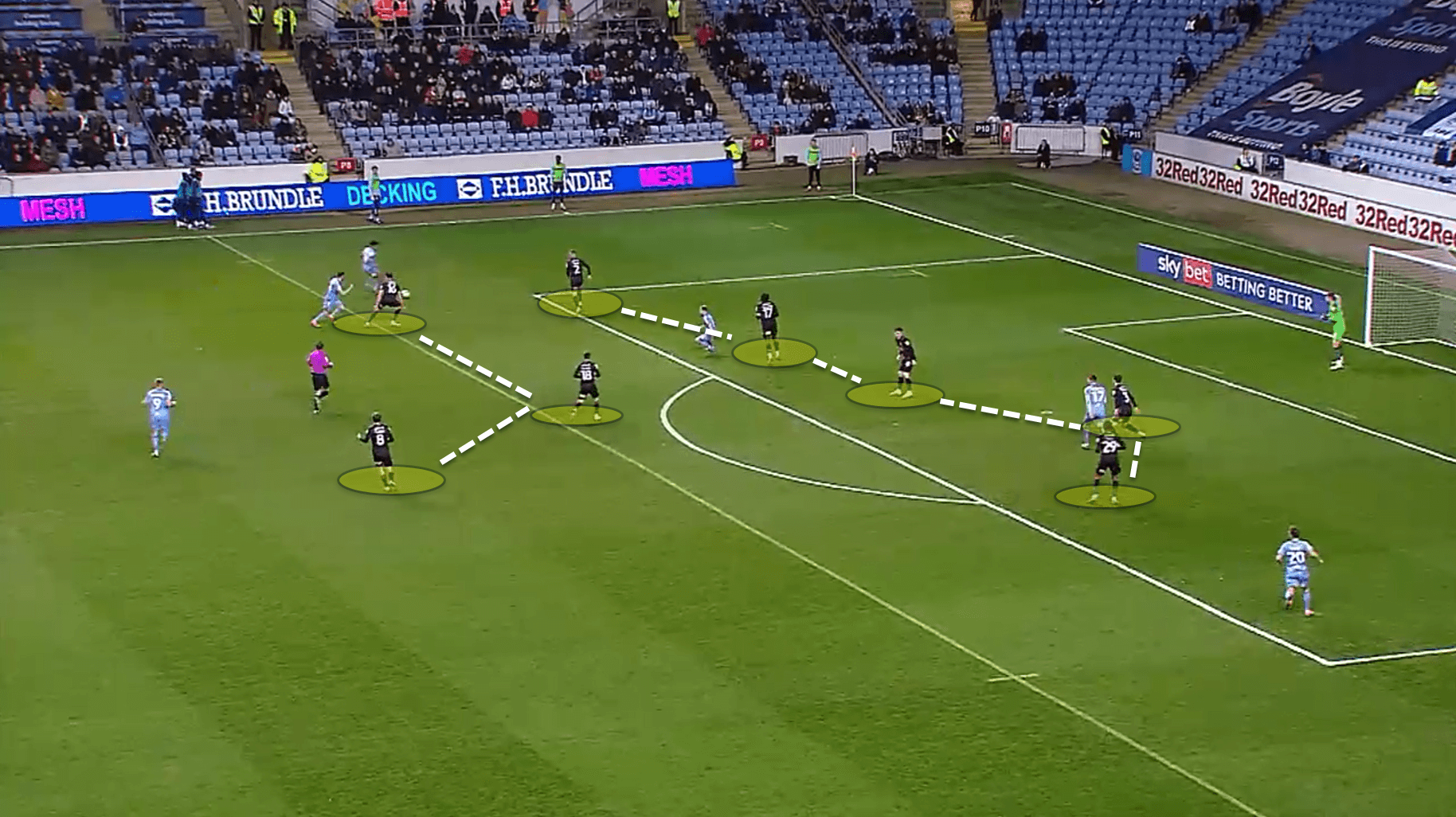
In this phase, the Hatters will look to regain possession in the wide areas, forcing the opponent away from goal. It also explains why most of Luton’s defensive duels come in deep, wide areas of the pitch for the most part.
The following data visualisation displays all 73 of Luton’s defensive duels from their recent game against Middlesbrough:
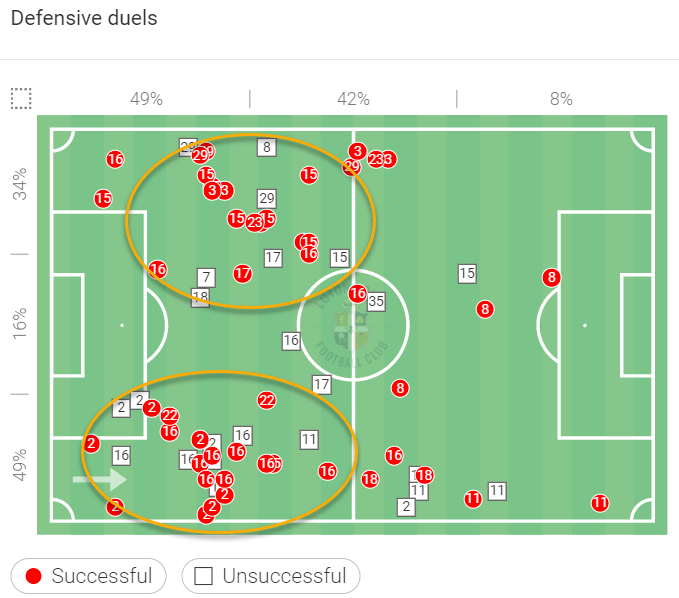
If the pressing trap is broken, the players must drop back in unison and create two banks of five and three in front of the goalkeeper.
The two centre-forwards remain high up the pitch roughly around the halfway line in order to act as an attacking outlet when possession is regained as the side are looking to break forward.
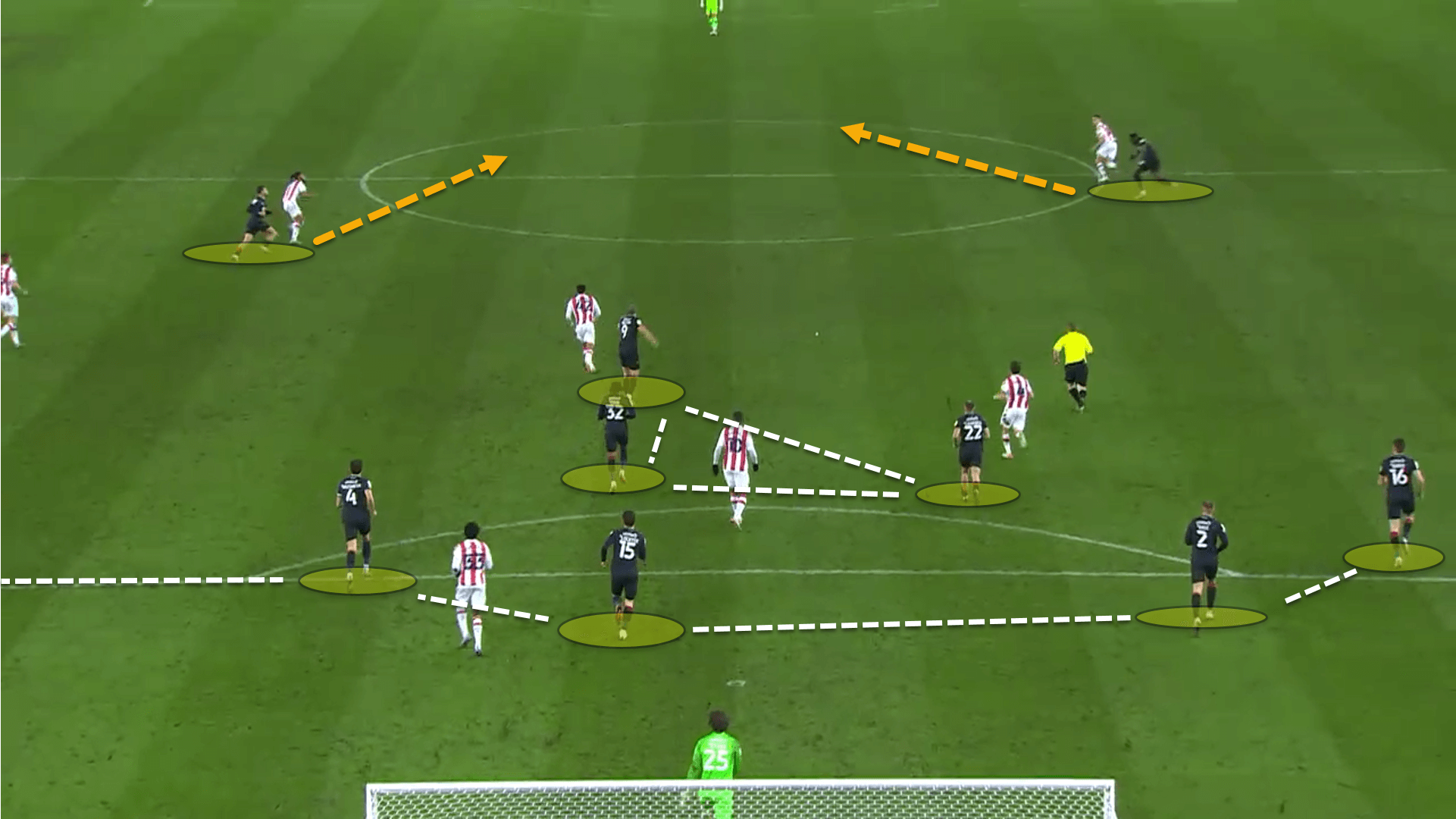
Harry Cornick and Adebayo are excellent outlets for attacking transitions. Both are very quick off the mark and the latter is wonderful in the air as well as holding up the ball in order to allow others to make up the ground. Jones is certainly utilising the squad to their fullest potential right now.
Direct attacks
It was established earlier in this team analysis that Luton are a very direct side in possession. They tend not to play out from the back, particularly against better opposition, and instead opt to go long from goal-kicks towards Adebayo.
However, going long is pointless without the correct support structure around the player competing for the aerial ball. Winning the first contact is nowhere near as important as regaining the second ball and a good support structure is of paramount importance to do this. Luton are very well-drilled at creating good support around the target player.
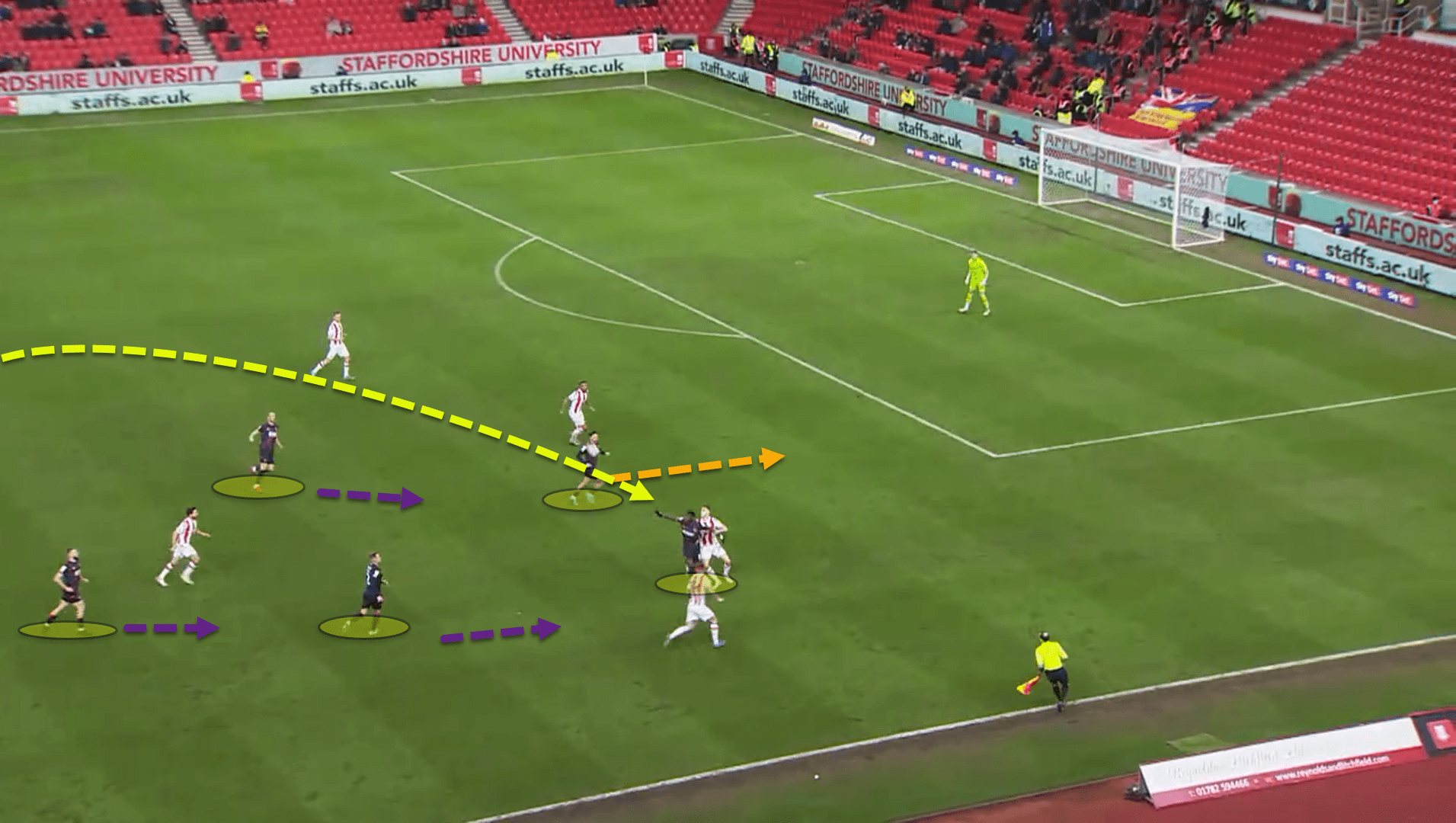
This allows the Hatters to play the ball into the attacking third and then sustain an attack their where they can look to create goalscoring opportunities.
No team have played more long balls than Luton Town in the Championship across this season. Jones’ side are currently averaging 50.89 long passes per 90 with an accuracy of 51.5 percent. Once again, the manager is using the team’s strengths to inflict maximum damage in games.
At times when Luton are in a positional attack and opt to play their way into the final third as opposed to going long, the side’s tactic is to progress down the right flank and create wide overloads on this side.
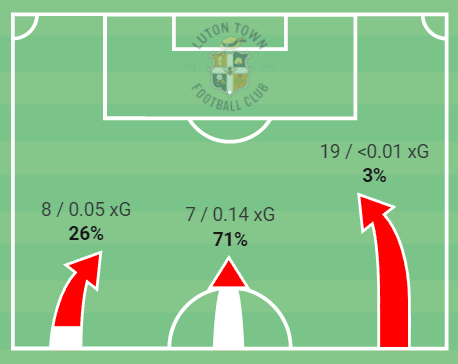
This is an example of all 34 of Luton’s positional attacks from a recent bout against Derby two weeks ago. 19 were down the right-hand side which is exactly 56 percent of the side’s overall attacks.
Interestingly, their xG down this flank was very low at merely 0.01 compared to 0.05 on the left and 0.14 through the central corridors. Perhaps the side would benefit from attacking down the left slightly more.
Nevertheless, Jones’ reason for instructing his players to create overloads on the right is because of the quality of players. Luton generally have Reece Burke, James Bree, Allan Campbell and Adebayo on this side.
Burke, being the right centre-back, will move up the pitch and help form the overload.
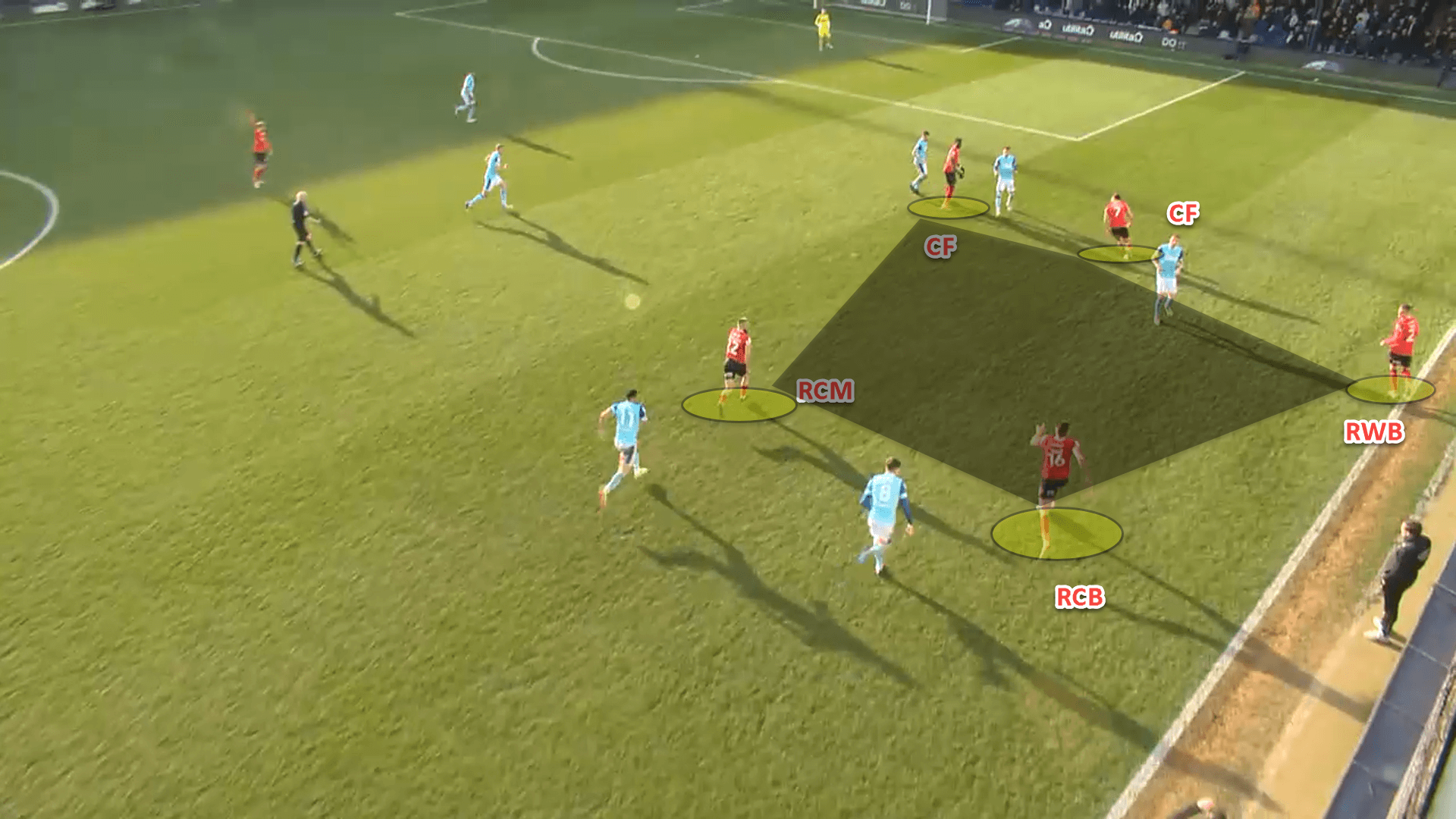
From here, the Hatters can try and break down the opponent’s low block and cross the ball into the box. Having someone like Adebayo is wonderful for this. Luton have scored 11 goals this season with their head. Only Fulham have scored more.
However, in case of possession being lost, the overload allows them to have numerous players in close proximity to counterpress and negate the opposition’s counterattack.
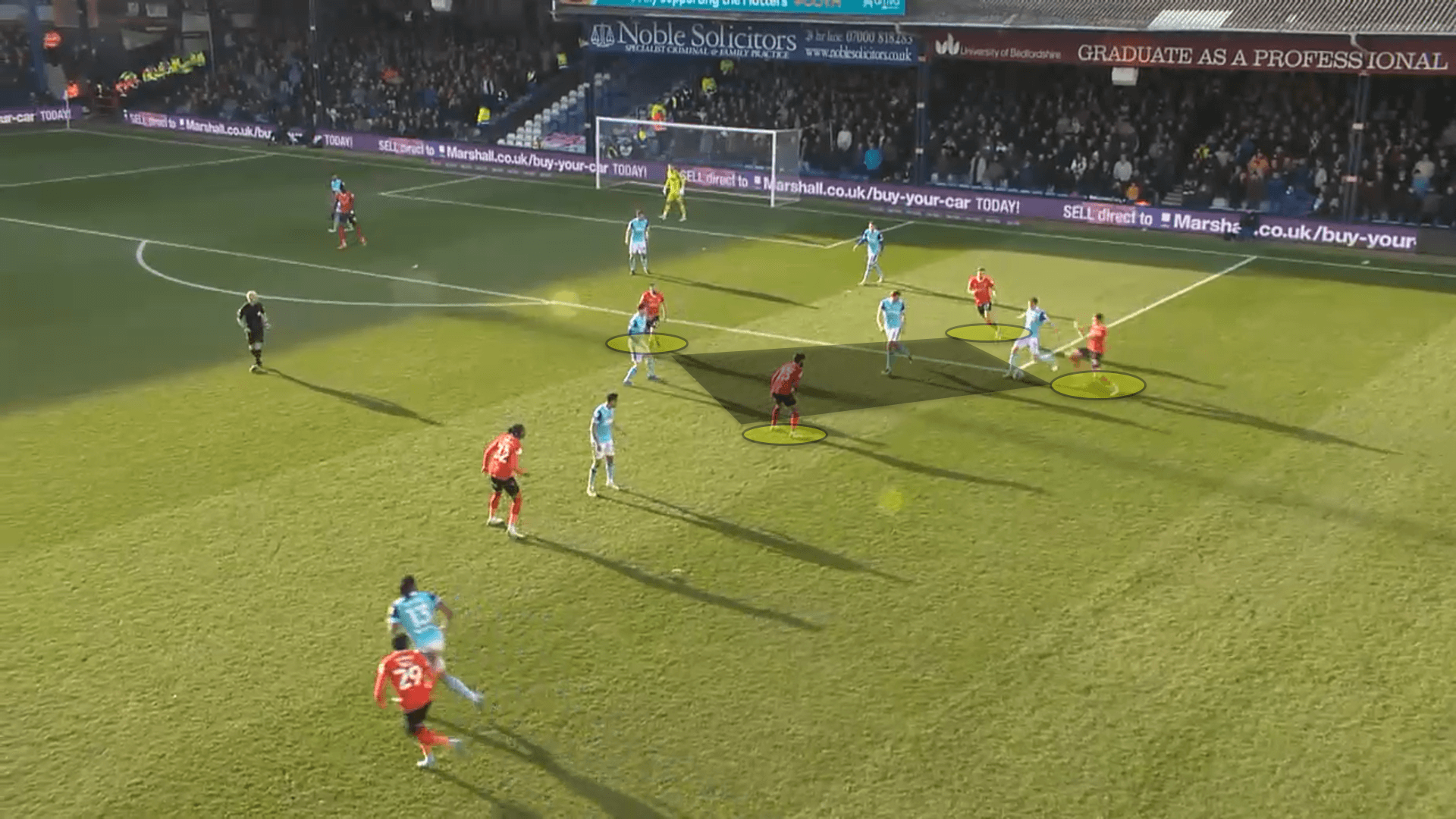
As is a common theme when digging into the depths of Luton’s tactical set-up, Nathan Jones sets his side up to optimise the players’ strengths. Ultimately, this is the purpose of tactics.
Conclusion
Often, people are of the cliched belief that managers deploy the tactics and that the players need to simply execute them irrespective of whether it’s detrimental to their own capabilities. But this is not the case.
Head coaches employ certain tactics in order to get the best out of the players at their disposal. Luton do not have the most technical players in the world and so Jones must ensure that their strengths are maximised, and weaknesses are hidden within the tactical structure, which the 48-year-old has certainly done to great success.
Whilst the manager of Stoke City during his unsuccessful spell in 2019/20, Jones quoted Miley Cyrus’ famous song ‘The Climb’ when making an admission of the uphill battle faced by his side. This seems to work more fittingly now as the Hatters continue their push for a playoff spot. While it may seem like too big a step, mountains are there to be climbed.






Comments